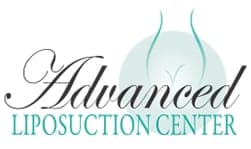Cranberry Township plastic surgeons at Advanced Liposuction Center want clients to know that there’s a better way now to take years off the appearance of your face using our Fat Transfer to Face Natural Cheek Enhancement procedure.
Below are some FAQ’s to help explain what this revolutionary treatment is and how it is done:
Q:What is a fat transfer?
A:A fat transfer involves taking excess fat from a part of your body where it is not wanted (i.e. your abdomen, thighs, love handles or buttocks) and using it to enhance an area of your body such as your cheeks that have lost their youthful volume.
Q: What is the benefit of the fat transfer method vs. using implants?
A:Although frequently used in the past, implants did not look or move naturally. Patients ended up looking as though “they had work done.” Using your body’s own fat allows for a more natural, healthier and aesthetically pleasing look for your face. In addition, because you are using your body’s own tissue, there is zero chance of rejection or allergic reaction.
Q: Can you describe the actual procedure?
A:First, our expert cosmetic surgeons will harvest living fat cells from another part of your body using liposuction or another method. The fat is purified using a centrifuge to collect healthy cells. Second, this fat is then injected into the cheeks in thin layers to add volume where it is desired. This technique is minimally invasive. It is done as an outpatient procedure and requires only local anesthesia to complete.
Q: Do I have a say in the final appearance of my cheeks?
A:Absolutely! At your free consultation you’ll meet with one of our highly skilled plastic surgeons that will discuss your appearance goals with you. You will be asked to look at many pictures of different facial structures to help decide which one you’d like to achieve. If you have photos of celebrities whose faces you admire, bring them with you to the appointment. Our cosmetic surgeons have a finely developed sense of what will look best on a particular face and will help you arrive at goal that is realistic and beautiful.
Q: How safe are cheek fillers?
Cheek fillers are a low-risk, comparatively simple surgery with a quick recovery. But that doesn’t negate the possibility of adverse effects.
The following are typical side effects of cheek fillers:
- swelling\sbruising\sitching\redness
- There is a very tiny chance of infection or an adverse reaction with any dermal fillers.
- Among the less frequent negative effects are:
harm to your veins or arteries filler leaking tissue death from an obstruction in the blood supply vision loss
Q: How long do the results of cheek fillers last?
A: The duration of results for cheek fillers can vary depending on several factors, including the type of filler used, the amount of filler injected, and individual differences in metabolism and skin elasticity.
Generally speaking, the results of cheek filler treatments can last anywhere from six months to two years. Hyaluronic acid-based fillers tend to last on the shorter end of the spectrum, while fillers made from substances like calcium hydroxylapatite and poly-L-lactic acid can provide longer-lasting results.
Factors that can affect the longevity of cheek filler results include the individual’s age, skin quality, lifestyle habits, and overall health. Sun exposure, smoking, and poor diet and hydration can all contribute to faster breakdown of filler material and reduced longevity of results.
It’s important to note that while the effects of cheek fillers are not permanent, they can be maintained with regular touch-up treatments. Many patients choose to schedule follow-up appointments every six to 12 months to maintain the desired level of fullness and volume in the cheeks.
If a patient is not satisfied with the results of their cheek filler treatment, the filler can be dissolved with an enzyme injection. This allows for adjustment or reversal of the treatment, and is typically a safe and effective option for those who wish to modify or remove their filler.
Q: What are the potential side effects of cheek fillers?
A: As with any cosmetic procedure, there is a risk of potential side effects associated with cheek filler treatment. Common side effects include redness, swelling, bruising, and tenderness at the injection site. In some cases, patients may experience temporary numbness or itching in the treated area. More serious side effects are rare but can include infection, allergic reaction, and tissue damage. It is important to choose a qualified and experienced injector to minimize the risk of complications. Patients should discuss any concerns or potential risks with their injector prior to treatment.
Q: How do I find out more?
A:It’s simple! Get started by contacting any of our Pittsburgh area offices today to set up your initial consultation by calling: 724-683-7581.
